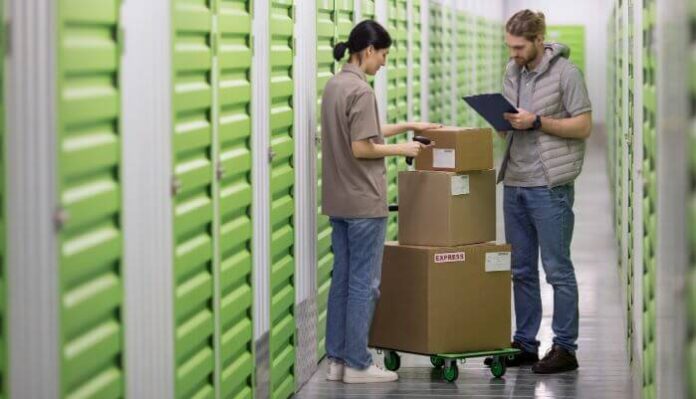At some point in our lives, we all accumulate items we don’t want to part with but struggle to store. Maybe it’s cherished memorabilia, seasonal decor, or equipment for a hobby that’s taken a backseat.
Whatever the reason, when our closets overflow and garages can’t take another box, it’s time to consider a self-storage facility. But with so many options out there, how do you pick the right one that suits your needs at this location?
In this guide, we’ll walk you through the essential steps to help you find the perfect storage space to match your needs, ensuring your valuables remain safe and accessible.
How to Choose the Right Self-Storage Facility
#1: Determine Your Storage Needs
Understanding the scope of your storage needs will be crucial in choosing a suitable facility. Hence, before you start browsing for self-storage options, take some time to evaluate your specific needs.
Start by taking an inventory of all the items you plan to put away. Whether it’s old furniture, books, or seasonal clothing, knowing what you have will paint a clearer picture of the type and size of storage you’ll need.
With your inventory in hand, you can now gauge the space required. Storage units come in various sizes – from compact lockers suitable for a few boxes to expansive rooms for larger items. Opting for the right size not only ensures that all your belongings fit but also means you’re not overpaying for space you don’t use.
As you assess, remember that it’s often better to have a little extra room to navigate and organize within the unit. This makes accessing items easier and reduces the risk of damage.
#2: Research Local Facilities
Once you have a clear picture of your requirements, it’s time to research self-storage facilities in your local area. You can use online resources, such as Google Maps or self-storage directories, to find options nearby. There are companies such as Bolt Storage with multiple locations across the US.
Consider factors like location, security features, and the facility’s reputation. Reading online reviews and asking for recommendations from friends and family can provide valuable insights.
#3: Visit the Facilities in Person
While online research can provide a wealth of information, nothing beats visiting potential storage facilities in person. During these visits to your top choices, note whether the facility is well-maintained and clean.
Check if there are quality security features like cameras and gated access there. Confirm whether its operating hours are convenient for your needs and whether it offers climate-controlled units if required. These site visits will provide a comprehensive understanding of the facility’s overall condition and help determine if it aligns with your specific storage needs and expectations.
#4: Climate-Controlled Storage
Consider a climate-controlled storage unit if you plan to store sensitive items like electronics, artwork, or furniture. These units maintain stable temperature and humidity levels, protecting your belongings from extreme weather conditions.
#5: Consider Accessibility
When it comes to self-storage, accessibility isn’t just about being able to enter your unit; it’s about how conveniently and efficiently you can do so. If you foresee needing to access your items regularly, you might want a facility that’s closer to your home or workplace.
On the other hand, if you’re storing things you won’t need for months, a location further out might be acceptable, especially if it offers cost savings.
Additionally, think about the facility’s hours of operation. Some facilities provide 24-hour access, while others have more limited timings. If you’re an early bird or a night owl, or if your schedule is unpredictable, round-the-clock access can be invaluable.
Also, consider the layout of the facility. Is it easy to drive up to your unit? Is there ample space for maneuvering larger items or vehicles? Elevator access, trolleys, and ramps can also make a world of difference when it comes to moving things in and out.
#6: Review Rental Terms and Pricing
Navigating the financial side of self-storage is as important as assessing physical attributes. Not all storage facilities structure their pricing and terms the same way. To ensure you’re making an informed decision, consider the following:
- Check the rental agreement
Some facilities may offer month-to-month rentals, providing flexibility, especially if you’re unsure about the duration you’ll need the storage. Others might require longer-term commitments but could offer discounted rates in return.
- Be wary of hidden costs
While an advertised price might seem attractive initially, there could be additional fees for security, insurance, or climate control. Always ask for a breakdown of all charges to get a comprehensive understanding of the total monthly cost.
- Promotions can also play a role in your decision
Some storage facilities offer introductory rates, which might be much lower for the first few months before reverting to regular pricing. While these deals can be enticing, always calculate the long-term cost and consider whether it aligns with your storage plans.
- Inquire about payment methods and policies
Knowing the acceptable payment forms, due dates, and potential late fees will help you manage your finances smoothly and avoid any unexpected charges or complications.
Final Note
Choosing the right self-storage facility is about more than just finding space; it’s about ensuring that your possessions are safe, accessible, and stored under terms that suit your needs.
By implementing the tips mentioned in this article, you’ll be setting yourself up for a hassle-free storage experience. Remember, the right storage solution will bring peace of mind, keeping your items secure and easily accessible whenever you need them.







